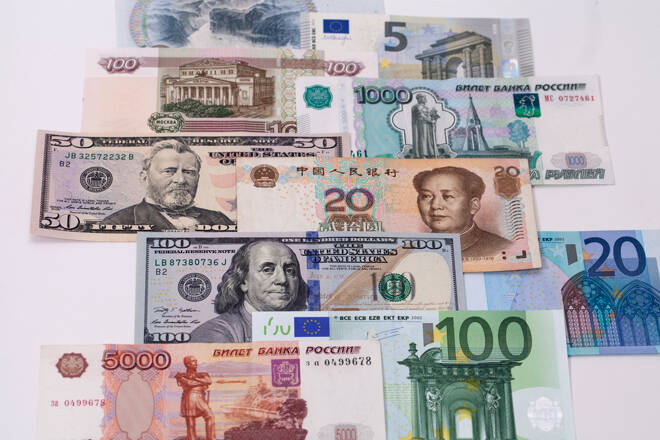Advertisement
Advertisement
The Week Ahead – Central Banks and US Inflation in Focus
By:
The RBA and the ECB deliver monetary policy decisions in the week ahead, with economic data from the Eurozone, China, and the US to also draw interest.
On the Macro
It is a quiet week ahead on the economic calendar, with stats 39 due out through the week ending June 10. In the week prior, 77 stats were in focus.
For the Dollar:
While it is a quiet week ahead, it is an important one.
On Thursday, jobless claims will draw interest ahead of inflation figures on Friday.
With plenty of market sensitivity to inflation and Fed monetary policy, Friday’s numbers will be key.
In the week ending June 3, 2022, the Dollar Spot Index rose by 0.46% to end the week at 102.140. In the week prior, the Index slid by 1.44% to 101.668.
For the EUR:
German factory orders and industrial production figures will draw market interest on Tuesday and Wednesday.
The markets will also look for any revisions to Eurozone GDP numbers on Wednesday ahead of the ECB interest rate decision on Thursday.
With the markets expecting the ECB to leave rates unchanged, the focus will be on ECB President Christine Lagarde and the press conference.
For the week, the EUR fell by 0.15% to $1.0719. In the previous week, the EUR rallied by 1.62% to $1.0735.
For the Pound:
BRC Retail Sales Monitor numbers for May are due out on Tuesday along with finalized private sector PMIs. Any revisions to the services PMI will have the greatest impact on the Pound.
Other stats include house price data and construction PMI numbers that should have a muted impact on the Pound.
In the week, the Pound slid by 1.13% to end the week at $1.2488. The Pound rose by 1.21% to $1.2631 in the week prior.
For the Loonie:
Trade data and the Ivey PMI will be in focus on Tuesday. Expect the trade data to draw the most interest.
On Friday, employment figures for May will be the key stats of the week, however.
In the week ending June 3, the Loonie rose by 1.02 to C$1.2594 against the greenback. The Loonie rose by 0.90% to C$1.27240in the week prior.
From the Asia Pacific
For the Aussie Dollar:
It’s a particularly quiet week ahead on the economic data front, with stats limited to business confidence figures.
The NAB Business Confidence numbers for May are due out on Wednesday.
The main event, however, will be the RBA’s June monetary policy decision on Tuesday. The markets are expecting a 25-basis point hike. Anything more and a hawkish rate statement would support an Aussie Dollar breakout.
In the week, the Aussie Dollar rose by 0.63% to $0.7207. In the week prior, the Aussie Dollar increased by 1.73% to $0.7162.
For the Kiwi Dollar:
It’s also a quiet week ahead, with electronic card retail sales the only stat to consider. The markets will need to wait until Friday for the May figures, leaving the Kiwi Dollar in the hands of market risk sentiment early in the week.
The Kiwi Dollar slipped by 0.34% to end the week at $0.6510. In the previous week, the Kiwi Dollar rallied by 2.16% to $0.6532.
For the Japanese Yen:
On Tuesday, household spending will draw interest ahead of first quarter GDP numbers due out on Wednesday.
The numbers are unlikely to have a material impact on the Yen, however, with monetary policy divergence Yen negative.
The Japanese Yen slid by 2.96% to end the week at ¥130.88 against the dollar. In the week prior, the Yen ended the week up 0.59% to ¥127.12.
Out of China
Trade data will draw plenty of interest on Thursday ahead of inflation numbers on Friday.
Early in the week, the Caixin Services PMI for May will set the tone.
On Monday, the Chinese Yuan rose by 0.58% to CNY6.6603. The Yuan slipped by 0.10% to CNY6.6994 in the week prior.
Geo-Politics
Russia and Ukraine will remain the area of focus in the week ahead, along with chatter from China.
About the Author
Bob Masonauthor
With over 28 years of experience in the financial industry, Bob has worked with various global rating agencies and multinational banks. Currently he is covering currencies, commodities, alternative asset classes and global equities, focusing mostly on European and Asian markets.
Advertisement
